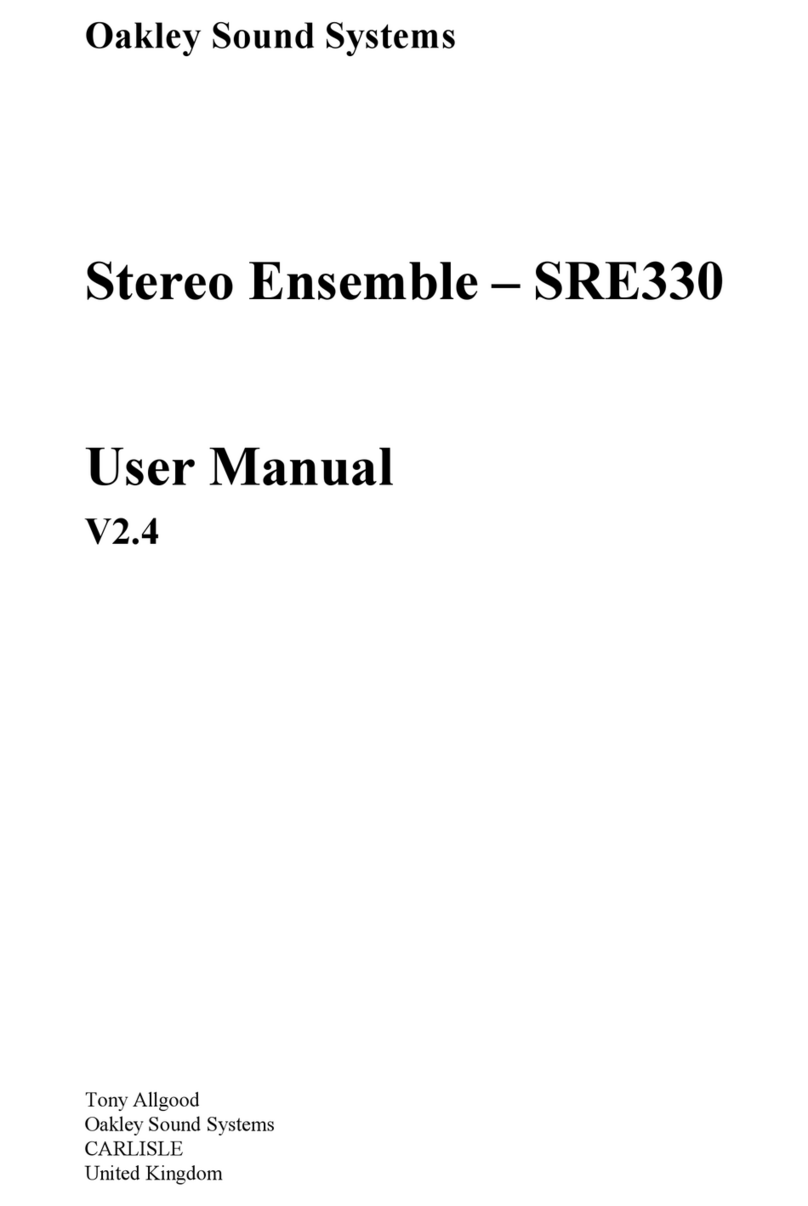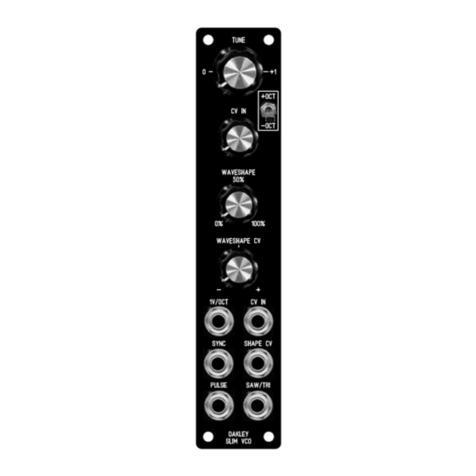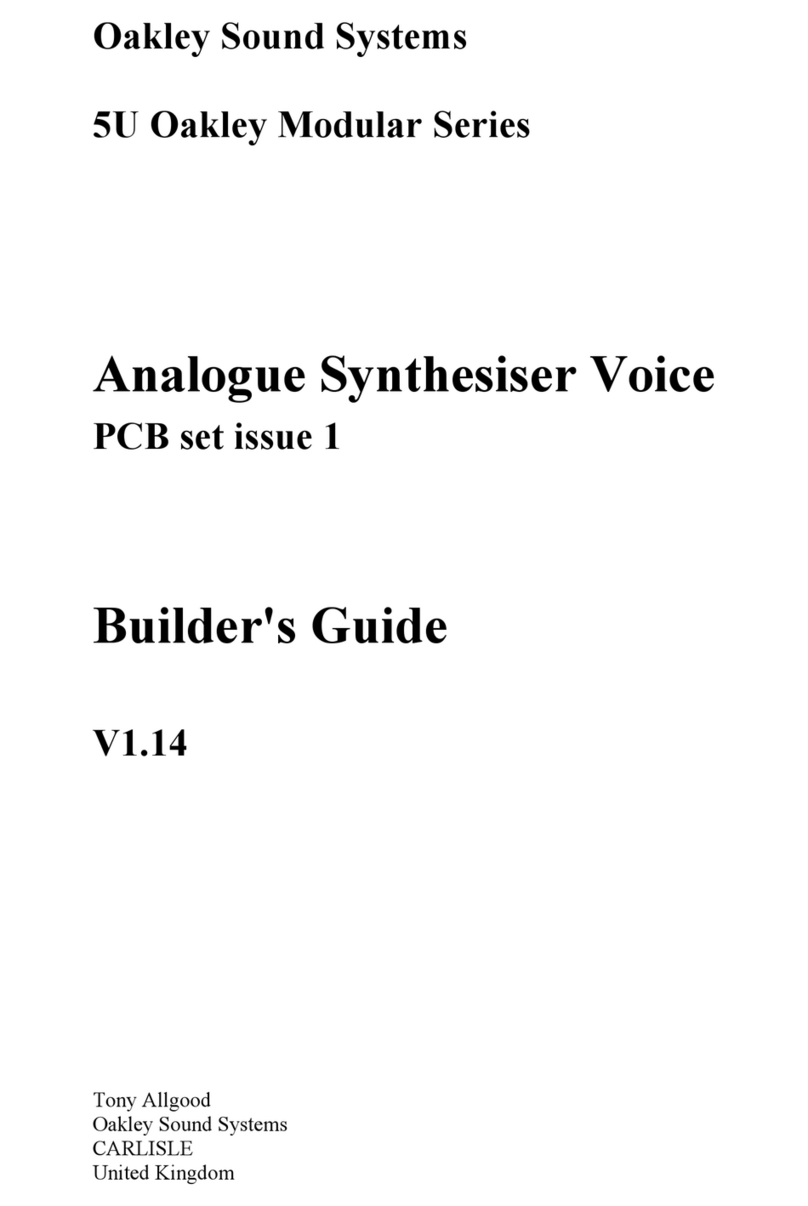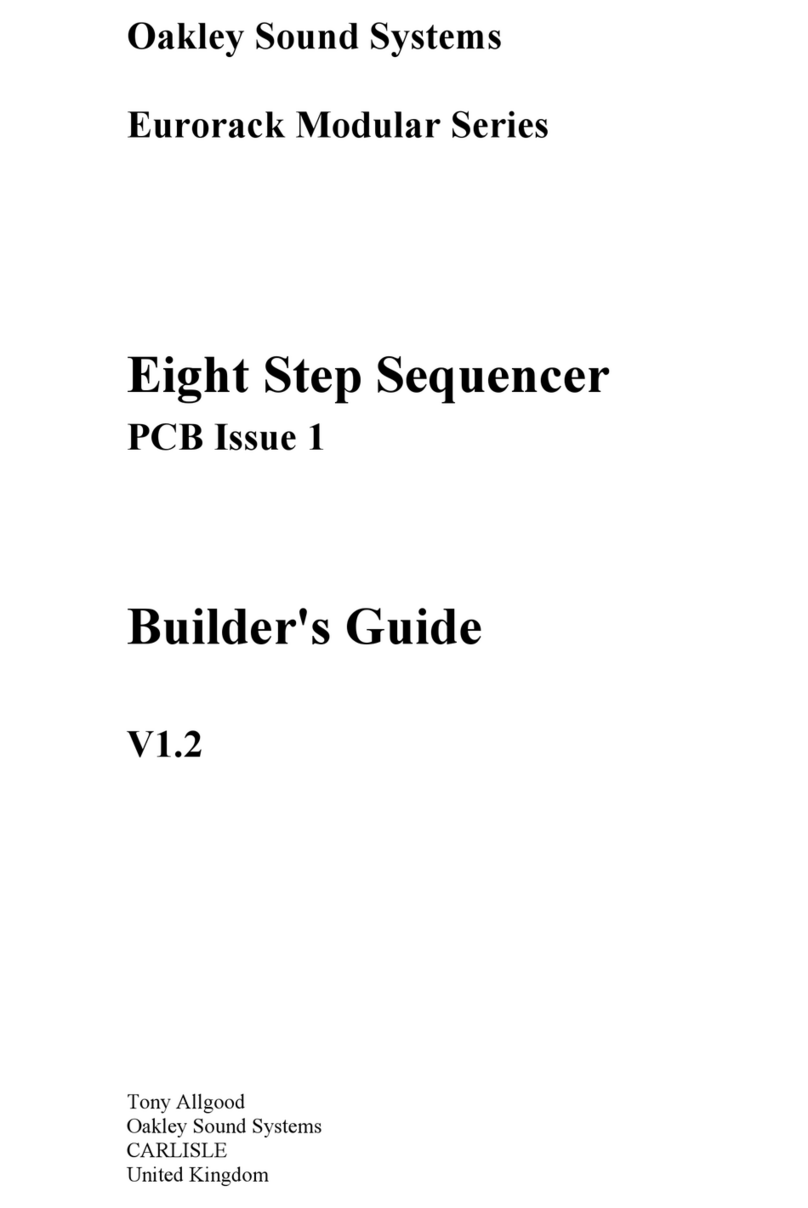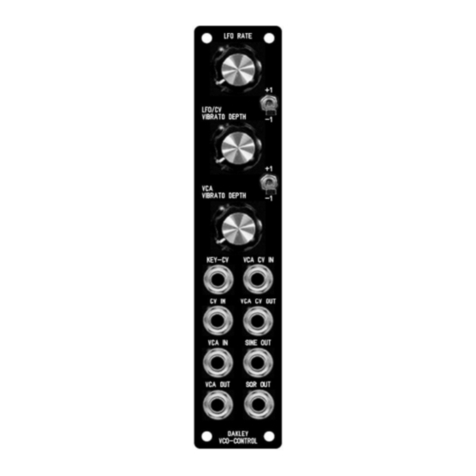FEEDBACK
The output of the delay circuitry can be passed back and mixed with the input signal. This
creates repeat delays. Increasing amounts of feedback will increase the volume of the repeats.
It is possible to have the repeat volume louder than the original signal. This creates an rolling
snowball effect – often called self oscillation – by which the final output signal gets louder and
louder until the A R30's built in signal limiting circuitry takes over. At this point the sound
becomes heavily distorted and develops an interesting character.
An internal trimmer can control the maximum allowable amount of feedback.
It should be noted that the delayed signal's volume is somewhat affected by the delay time.
Therefore, self oscillation may be more readily encountered at certain delay times.
The A R30 can be produce flanger like sounds with the delay time short and fairly large
amounts of feedback.
RANGE (Switch)
This two position toggle switch determines whether the effected signal runs through one
MN3005 BB or two MN3005 BB s. When two devices are selected the signal is delayed
for twice the amount of time it would have been with just one device. LONG selects both
MN3005 devices, while SHORT selects just the one.
For chorus and flanger type effects, which require only small delays, then the short setting is to
be used.
As the signal pathway through a BB is long and tortuous the audio will be slightly distorted
on the way out. Passing a signal through two such BB s one after an another will increase
that distortion. Greater fidelity will normally be obtained using the A R30 in the short setting.
However, it is not quite that simple for longer delays.
The available signal bandwidth, that is, the range of audio frequencies passed by the delay
lines, is controlled by the delay time for each BB and not the overall delay time of both
devices combined. For example, if you wish to have a 300ms overall delay, then the maximum
bandwidth will be obtained when you have the switch in the long mode. That is, both BB
devices are being used but being run at half their maximum delay times.
LFO RA E
The A R30 features an inbuilt low frequency oscillator (LFO) which can modulate, or
control, the delay time. The speed at which the LFO cycles is controlled by this knob. The
speed can be varied from a slow 0.1Hz (one cycle every 8 seconds) to around 26Hz at its
fastest.
Like many famous chorus units the output waveform of the LFO is triangular. This means it
rises in a straight line and falls in a straight line. The rise and fall times are always equal.
5
